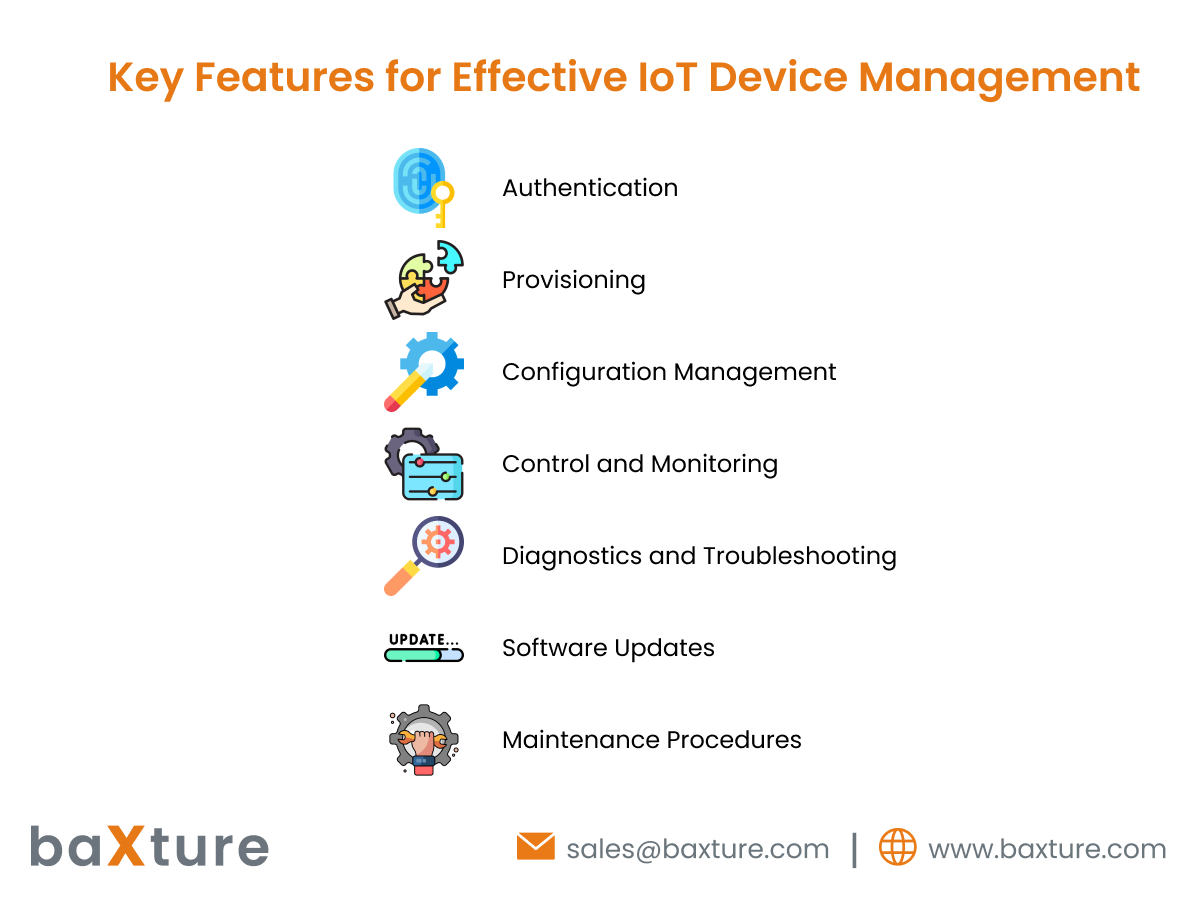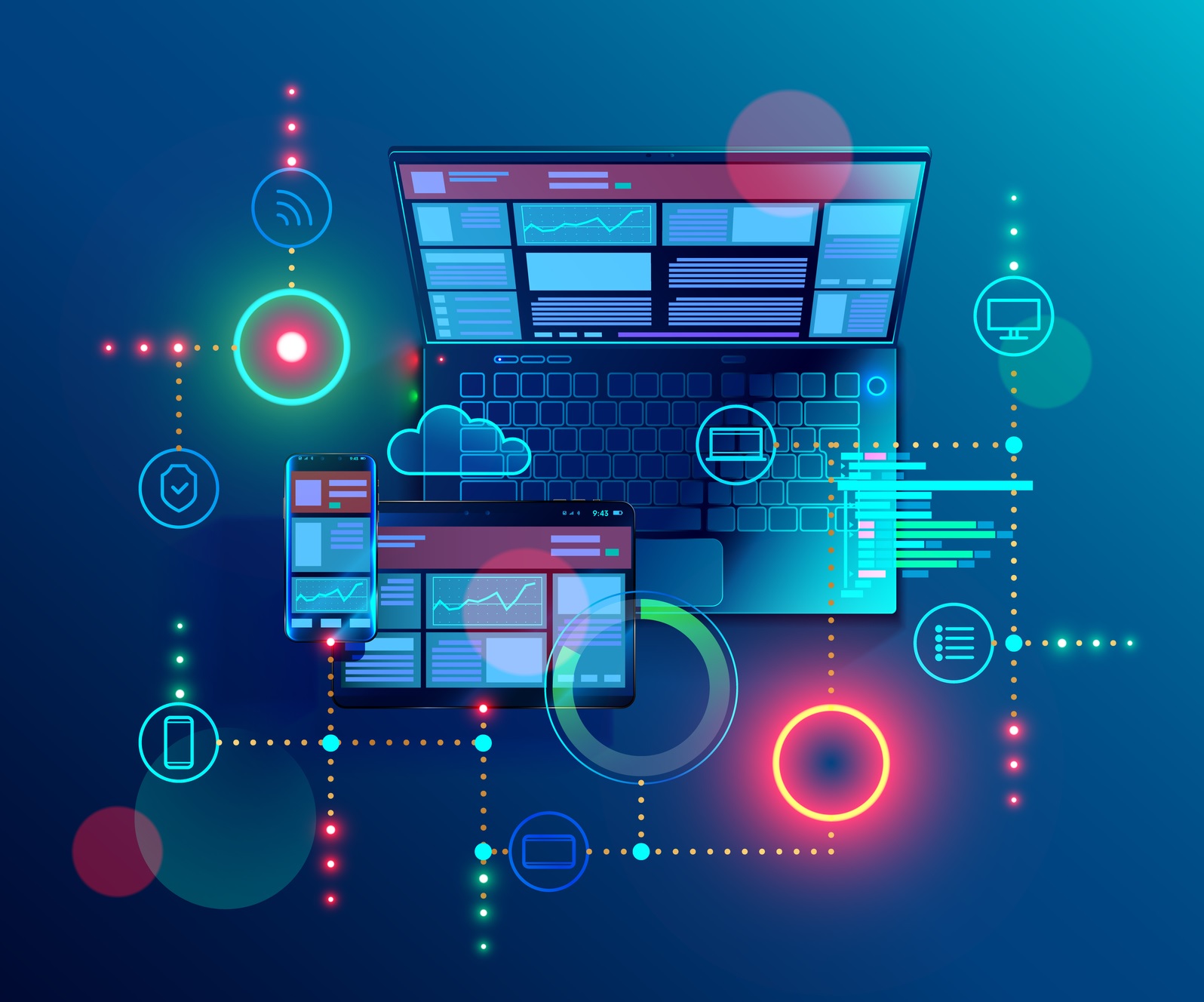Unlock IoT Potential: Device Management Solutions & Benefits
Are you truly harnessing the potential of your IoT devices, or are they just another set of blinking lights adding to the digital noise? Mastering IoT device management is no longer optional; its the key to unlocking exponential value and achieving a competitive edge in todays hyper-connected world.
The Internet of Things (IoT) has rapidly evolved from a futuristic concept to an integral part of modern business and everyday life. With a proliferation of connected devicesranging from industrial machinery and vehicles to healthcare instruments and smart home appliancesthe sheer volume of data generated is staggering. But raw data alone is worthless; the true power lies in the ability to transform it into actionable insights that drive informed decision-making and optimize operations. This transformation is precisely where effective IoT device management comes into play.
| Category | Information |
|---|---|
| Concept | IoT Device Management |
| Definition | The suite of tools and practices designed to effectively organize, monitor, and maintain connected devices within an IoT ecosystem. |
| Key Functions | Provisioning, remote access, configuration management, security, monitoring, updates, and diagnostics. |
| Benefits | Seamless operation, enhanced security, improved adaptability, reduced operational costs, and actionable insights. |
| Value Projection | Data generated by IoT devices is poised to unleash between USD 5.5 and 12.6 trillion in value over the next 5 years. |
| Reference Link | Oracle - What is IoT Device Management? |
Groove technology, for instance, understands this imperative. They empower businesses with custom IoT solutions that meticulously convert raw data from sensorsembedded in vehicles, machinery, or healthcare devicesinto precisely targeted, actionable intelligence. This capability represents a paradigm shift, moving away from reactive problem-solving to proactive, data-driven strategies.
- Hilarious Pranks Funny Numbers To Call For Laughs More
- Stephen A Smiths Daughter Heartbreak Resilience Legacy
But how does one navigate the complex landscape of IoT device management and select the right platform for their specific needs? The task can seem daunting, given the myriad of options available, each touting its unique features and benefits. Fundamentally, an IoT device management platform serves as the central nervous system of an IoT ecosystem. Its core function is to offer a holistic IoT solution encompassing remote access, streamlined configuration management, and robust security measures.
Choosing the optimal IoT device management platform demands careful consideration of several critical factors. Its not a one-size-fits-all scenario. The ideal platform will align seamlessly with your organization's specific requirements, technical capabilities, and long-term strategic goals.
The process begins with the collection of data from IoT devices. This data is then transmitted to a gateway device, which acts as a consolidator, meticulously gathering information from various sources and forwarding it to a central IoT hub. This hub serves as the nerve center for IoT device management and real-time monitoring, offering a unified view of the entire connected ecosystem. From there, the refined data is often exported to a preferred cloud service, such as Azure, where powerful analytics tools stand ready to dissect, interpret, and extract invaluable insights.
- Jon Cor Is The Canadian Actor Married Facts Dating
- 1883 Finale Tim Mcgraw Faith Hills Emotional Reactions Details
At its core, effective IoT device management hinges on the ability to register, meticulously organize, proactively monitor, and remotely manage every IoT device within the network. This comprehensive control allows administrators to maintain peak performance, promptly address any anomalies, and ensure consistent operation across the entire fleet of devices. Equally crucial is the capability to transform raw data streams into meaningful insights through advanced analytics and machine learning algorithms. These tools unearth hidden patterns, predict potential failures, and empower organizations to make data-driven decisions with confidence.
The use cases for sophisticated IoT device management are vast and varied. In the industrial sector, for example, an industrial IoT platform can continuously monitor and analyze data emanating from industrial machines. This enables predictive maintenance, optimizing performance, and minimizing costly downtime. By anticipating potential equipment failures, businesses can schedule maintenance proactively, preventing disruptions to production and saving significant resources.
Google Cloud IoT represents another powerful suite of fully managed services, empowering developers to build, deploy, and manage comprehensive IoT solutions. It offers a robust set of capabilities, including seamless device connectivity, efficient data processing, and advanced analytics. Similarly, Microsoft Azure provides a robust IoT reference architecture designed to help developers create scalable and secure IoT solutions. Azure IoT Central further simplifies device management, enabling organizations to monitor and manage their IoT devices at scale with ease.
The transformative potential of IoT is undeniable. According to recent reports, the data generated by IoT devices is projected to unlock between USD 5.5 and 12.6 trillion in value over the next five years. When this data is securely stored, meticulously processed, and handled in full compliance with all relevant local laws, companies can leverage it to uncover valuable insights, identify emerging trends, plan future products with precision, and gain a distinct competitive advantage.
Azure, with its robust analytics, machine learning tools, and artificial intelligence capabilities, is perfectly suited for this task. In the dynamic world of IoT, device management platforms are indispensable tools, expertly handling everything from initial device provisioning to seamless firmware updates. These platforms provide a centralized console for overseeing device functionality, empowering teams to maintain the health and performance of their IoT ecosystem with unparalleled efficiency.
Recent events, particularly the heightened demands surrounding public health and safety in 2020, have propelled smart devices and connected technologies into the spotlight. In the collective effort to support a safer return to the workplace, businesses of all sizes are actively exploring and implementing innovative solutions, ranging from advanced thermal cameras and occupancy sensors to sophisticated machine learning algorithms for mask detection and contact tracing. These technologies highlight the critical role of IoT in addressing contemporary challenges.
Understanding comprehensive IoT solutions is essential for building a secure and interconnected future. These solutions are not merely technological advancements; they are the building blocks for companies seeking to embrace Industry 4.0 and unlock new levels of efficiency, productivity, and innovation. Making the most of connected devices, however, necessitates secure and robust IoT management practices.
A key feature of effective IoT device management is the ability for administrators to meticulously track the performance of connected devices, verifying that they are functioning precisely as expected. This proactive monitoring ensures optimal operation and allows for the prompt identification and resolution of any potential issues. Schools, for example, can leverage Internet of Things (IoT) technologies to significantly improve safety and security on campus. The IoT can enable timely emergency notifications, enhance security camera surveillance, and improve access control to buildings, creating a safer and more secure learning environment.
Furthermore, social media monitoring tools can provide administrators with valuable insights into campus sentiment, helping to identify potential instances of bullying or other concerning behaviors. By proactively addressing these issues, schools can create a more positive and supportive environment for students. The fundamental principles of IoT device management are becoming increasingly critical in today's interconnected world.
In this era of interconnected devices, effectively managing IoT (Internet of Things) and embedded devices has emerged as a paramount concern for organizations seeking to fully realize the immense potential of this transformative technology. IoT device management plays a pivotal role in ensuring seamless operation, bolstering security, and fostering adaptability.
Thats precisely when a comprehensive IoT device management solution becomes indispensable. But what, precisely, is IoT device management? In essence, it refers to the suite of tools and practices specifically designed to effectively organize, rigorously monitor, and proactively maintain the connected devices within a complex IoT ecosystem. It ensures that each device is properly provisioned, securely configured, and operating at peak performance.
The term Internet of Things was originally coined in 1999 by innovator Kevin Ashton. It describes a vast, interconnected world of objects that seamlessly share information through the internet, enabling connected devices to autonomously perform a wide range of tasks. With a solid grasp of the ESP32 BLE framework and its inherent capabilities, developers can unlock their creativity and develop innovative solutions to address a multitude of real-world challenges.
IoT device management platforms provide a centralized console for overseeing device functionality, streamlining the process for teams to maintain the health and performance of their IoT ecosystem. Connectivity is the lifeblood of any IoT solution, and specialized connectivity platforms play a crucial role in linking IoT devices to the internet, ensuring seamless data transmission and remote control. These features streamline device management processes, significantly reducing operational costs and improving overall efficiency.
Moreover, robust IoT platforms enable advanced analytics and data visualization, empowering businesses to extract actionable insights from vast amounts of IoT data. By visualizing complex data sets in an intuitive and accessible manner, organizations can quickly identify trends, patterns, and anomalies, leading to more informed decision-making.
Amazon Web Services (AWS) also provides a comprehensive suite of IoT services. This suite includes components like AWS IoT Core for seamless device management and connectivity, AWS IoT Greengrass for powerful edge computing capabilities, and AWS IoT Analytics for advanced data processing and insightful analytics. This comprehensive ecosystem empowers organizations to build, deploy, and manage sophisticated IoT solutions tailored to their specific needs.
The increasing demand for affordable and efficient IoT solutions in sectors like fleet management is fueling substantial market growth. The market is projected to surge from $17.49 billion in 2024 to an estimated $119.57 billion by 2031, highlighting the immense potential and transformative power of IoT technologies. This sustained growth underscores the critical importance of effective IoT device management in maximizing the value and impact of these connected ecosystems.

What is IoT Device Management? AI, Innovation & Benefits

The Complete Guide to IoT Device Management EXCEED ICT

IoT Device Management Platform A Comprehensive Guide